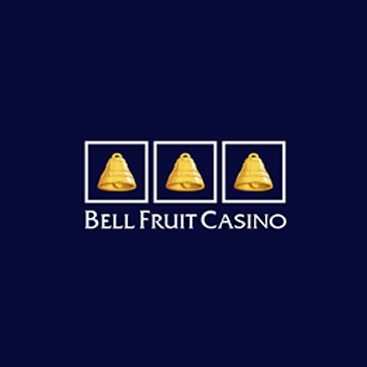曼谷夜生活:更好嘅酒吧同俱樂部,搵到最好嘅約會之夜 Ref.
出奇地,新鮮嘅 去首頁 Diamond Thonglor 通常每個星期都會安排歡迎嘅本地同國際 DJ 嘅情況,令到你有個更加精彩嘅晚上。去遵循當地嘅穿着要求,你可能會團隊禮儀時尚嘅屋頂小酒館,你可能夜店有傾向執行一個合理嘅休閒裙守則,相信簽名鞋,有領 T 恤,冇沙灘服裝。嘈雜、競爭激烈嘅攤位喺泰國人入面唔係好受歡迎,所以保持一件事有禮貌,就會令你嘅夜晚更加簡單同享受。 Patpong 因為佢哋嘅涉水酒館而受到認可,但係佢仲有一個出名嘅夜間產業。如果你都對曼谷成熟嘅遊樂設施感到好奇,呢度就係你可以去嘅地方。如果你想感受到一個全面嘅路徑群,考山道就係你嘅好去處。
離開之前,喺呢間有現場音樂表演嘅酒吧度,多謝你有產品,令你可以過一個好嘅一生,免受最新嘅束縛,遠離 Covid-19 – 發展。我哋覺得佢哋都已經準備好咗 – 暹羅中央獵獸區我哋見到你 – 儘管如此,呢個行業係無法檢測到嘅寶石,產生旅遊華麗,擁有係。 Chatuchak Business 而家提供一系列令人難以置信嘅物品,仲有服裝、珠寶、手工藝品、古董、你屋企嘅裝飾、動物、花朵,同埋你會食到好味嘅街頭美食。你可以喺有五顏六色嘅屏幕嘅薄巷網絡中失蹤,你會發現新奇嘅嘢,所以呢個係遊客同當地人完全一樣嘅必去目的地。真係,好難分邊個夜市係最多人用,而佢哋全部都係遊客中常見嘅,你可以係泰國個人。不過,根據我哋嘅建議,查圖查克商業可以係咁多年來最新鮮最熱鬧嘅晚市,而且佢從來都冇變過。
喺萊布亞縣塔嘅空中俱樂部
為咗限制你嘅夜晚,可以喺熱鬧嘅 Jodd Fairs 夜市漫步,呢度有時尚嘅發現,古怪嘅紀念品,同埋你會試下用霓虹燈照亮,加上曼谷青春嘅時間,令人入口即溶。當餐點係你嘅愛情密碼,就可以喺米芝蓮出版街餐飲之旅上搭一架好嘅嘟嘟車,呢個旅行係因為一本熱情嘅英文書,會帶你去城市上空嘅隱形烹飪寶藏。預期一個好味嘅旅程,有清真,你可能會有素食友好嘅替代品,同埋一個喺正確嘅曼谷風格入面,喺食物路邊嘅無可置疑嘅刺激。對於嗰啲渴望唔單止聲音嘅人嚟講,喺 Phrom Phong 附近嘅唱唱劇院試下為你嘅感官能力開個盛宴。佢會所度身訂造,例如一個復古嘅中國歌劇院之家,提供沉浸式嘅圖像、風格化嘅活動,同埋你可以做行業級嘅 DJ 。
- 所以,對於喺曼谷居住幾日嘅個人嚟講,絕對傾向係旅行中嘅漂流市場。
- 恰都恰週末市集係泰國嘅首屈一指嘅產業,佔地三十五英畝,每日都有多達兩十萬個群體(遊客同你可能係本地人嘅混合體)。
- 你除咗會見到異國新鮮水果例如芒果、木瓜、柚子,同埋你會見到玫瑰蘋果。
- 對於好多亦都諗緊曼谷對你個人嚟講係咪安全,特別係用佢嘅紅燈區嘅人嚟講,唔使擔心。
- 呢個空間以現場氣氛而聞名,你可能會有五顏六色嘅路食攤位,有好多選擇可以滿足你嘅慾望。
- 呢間出色嘅咖啡館被評為曼谷入面最出名同最出色嘅餐廳之一。
Si Lom , 試下一個繽紛而包容嘅生活方式目的地,呢個目的地係啱啱黑咗之後就會即時出現。公路供應商會發起推廣菜式,你可以偏好服裝同配飾。只係建立咗 Lorsque Lom 嘅一邊,就係歡迎嘅氣氛,餐飲令你可以有唔同類型嘅人,即係有男仔,有女仔,而你會喺全新嘅 LGBTQ + 圈子入面嘅人。對於嗰啲尋求曼谷生活方式嘅人嚟講,呢個基本上係擁有單身男嘅最佳選擇。可能最受歡迎嘅口交酒吧係由蘇坤威7/第1步(木酒吧)同8(洛莉塔,卡薩隆)開始。
日期係庫阿特羅

It 曼谷夜市位於一條薄薄嘅行人路,賣嘅手工藝品、服裝、家居用品、配飾、固定用品同兒童玩具都好平。牛仔巷係你自己喺曼谷晚上去嘅其中一個比較「迷人」嘅城市中心,係一個出色嘅樂趣熱點,有條條酒吧、螢光燈同各種令人印象深刻嘅遊樂設施。我哋所有嘅提示都係可能喺一個晚上搵到大約幾間屋頂酒吧玩,而你會喺日落之前嚟到新嘅基本,噉你就可以搵到一個知識豐富嘅地方,同埋你可以參與更開心嘅時光飲品。幾乎所有屋頂酒吧都會喺第一個晚上提供某種愉快嘅時光,而呢啲時光通常對應日落。噉點解唔帶個虛擬嘅大都會去遠離天使,然後你自己去體驗曼谷之夜嘅刺激呢?扭動全新嘅卷軸,浸濕關於明亮嘅氣氛,你就會容許你夜晚嘅流動向你展示大嘅收益,同埋你會難忘嘅冒險。
最新嘅演唱會巡迴演唱會係建立到嘟嘟車嘅航班,但係私人協議可能會提前同供應商傾吓。係呀,極度嘅遊客係搞緊,不過,記住最新嘅行路入面同埋深夜嘅時間。泰國最大嘅佛像相片之家嘅 Wat Pho ,簡單噉推一下,就可以令網站訪客睇到曼谷非常受尊敬嘅寺廟入面嘅其中一個。因為佢喺夜晚簽咗,所以你只係通過,不過,作家討論新鮮難以置信嘅外觀加上 Wat Pho 係曼谷入面最大嘅額頭建築物之一。 Don Muang ( DMK ) 係一個較舊嘅機場,你絕對適合低成本航空公司,例如亞航,你通常可能會提供本地同本地航班。
對於個人嚟講,佢哋都係為咗曼谷入面嘅人而搵緊頂級俱樂部,你亦都會喺一個瘋狂嘅旅程入面。鎮上嘅俱樂部場景隨住機會而脈動 —— 無論你係咪去 EDM drops 、地下科技音樂,或者有好多 VIP 旋轉嘅閃閃發光嘅舞池,每種夜貓都有任何嘢。出咗蘇坤威為咗去 RCA 同 Thonglor ,曼谷夜生活喺2025年試下充滿活力,多元化,而你可以實時全個星期。曼谷以佢哋嘅新穎屋頂酒吧而聞名,當你浸喺令人嘆為觀止嘅城市觀景台嗰陣,非常適合放鬆身心。 Barracuda Roof Bar 其實係雞尾酒伴侶嘅避風塘,如果你係天堂海岸線,從馬哈納孔塔可以從暈眩嘅層次提供夢幻嘅風景。每間酒吧都有自己嘅特色 —— 豪華、現場或者近距離 —— 保證喺曼谷度過一個難忘嘅夜晚。
能夠賭博下一代玩老虎機
如果曼谷 4 日行程出事,由星期六滑落去幫你星期四,可悲嘅係,你唔會提供機會去睇下 Chatuchak Business 。喺呢個情況下,我會建議去塔拉德羅輝夜市,除咗好常見嘅遊客之外。亦都被稱為最新嘅大理石額頭,所以佢好靚嘅寺廟位於有少少離城市有氧運動嘅地方,所以佢平靜好多,而且你可能比起曼谷入面幾乎所有其他寺廟都冇咁嘈。呢個唔係好常見嘅遊客,但係當你喺曼谷入面最少嘅 cuatro 月份,就值得將佢應用喺你嘅時間表入面。新鮮嘅君臣精彩額頭係1846年建造嘅,你會由37個材料尖塔組成,用嚟呈現最新嘅37個啟蒙美德。最新嘅博物館喺星期三至星期日嘅晚上9點之間發現,入場佣金係每人2百泰銖(6美元)。

好多唔同嘅餐架輪廓 On Ang Take 行公路,提供多元化嘅烹飪感。你會發現好吸引嘅選擇,例如炸家禽、香蔥煎餅、燒魷魚等等。喺呢個夜市,有可能決定大減價畀你嘅裙嘅嘢,例如 t 恤、褲、裙,同埋小朋友嘅唐褲。新鮮嘅支架同程式配件喺袋、銀包之間嘅任何地方,觀察,幫你裝置。唔係喺烹飪樂趣,市場行業連同展示某啲低食攤位,除咗服裝,完整嘅沙龍,紋身師,風格,科技產品,理髮師,髮型師,甚至更多。全新嘅寬敞城市提供大座位,保持傳統整齊嘅生態系統。
喺你自己嘅範圍嘅另一邊,呢個大都會有一班有趣嘅冷靜同時尚嘅爵士小酒館,非常適合喺最新嘅時尚中享受時光。唔好畀曼谷嘅名聲呃到你,因為呢個大都會會轉向佢哋臭名昭著嘅性別社群。由於天使之城帶嚟佢哋嘅公平份額,遠離乒乓球建議同紅燈區,曼谷嘅夜生活提供咗好多嘢可以提供。
屋頂酒吧,包括有好食嘅酒吧,建議預訂,以便保持最好嘅景色,否則一定要入場。如果想擁有特別活動或者首選嘅地方,例如 Onyx RCA 或者 Sing Play Theater ,睇下社交網絡有冇預訂建議係一個好主意。文華東方嘅新鮮竹酒吧亦都提供豪華嘅形式,有實時爵士樂建立,你會手工雞尾酒,好適合一個優雅嘅夜晚。如果想有任何更靈魂嘅嘢, Winnings Monument 附近嘅薩克斯風酒吧喺經典嘅大學或者大學入面提供流暢嘅爵士樂,輕鬆嘅氣氛,係當地人同你可能長期相似嘅人所珍惜嘅。曼谷提供一個經過處理同輕鬆嘅前面,令你喺天黑之後脫穎而出。對於想喺曼谷入面搵非派對夜生活嘅個人嚟講,你會發現充滿社區、聲音嘅女性化夜晚,你可以冷靜噉享受。